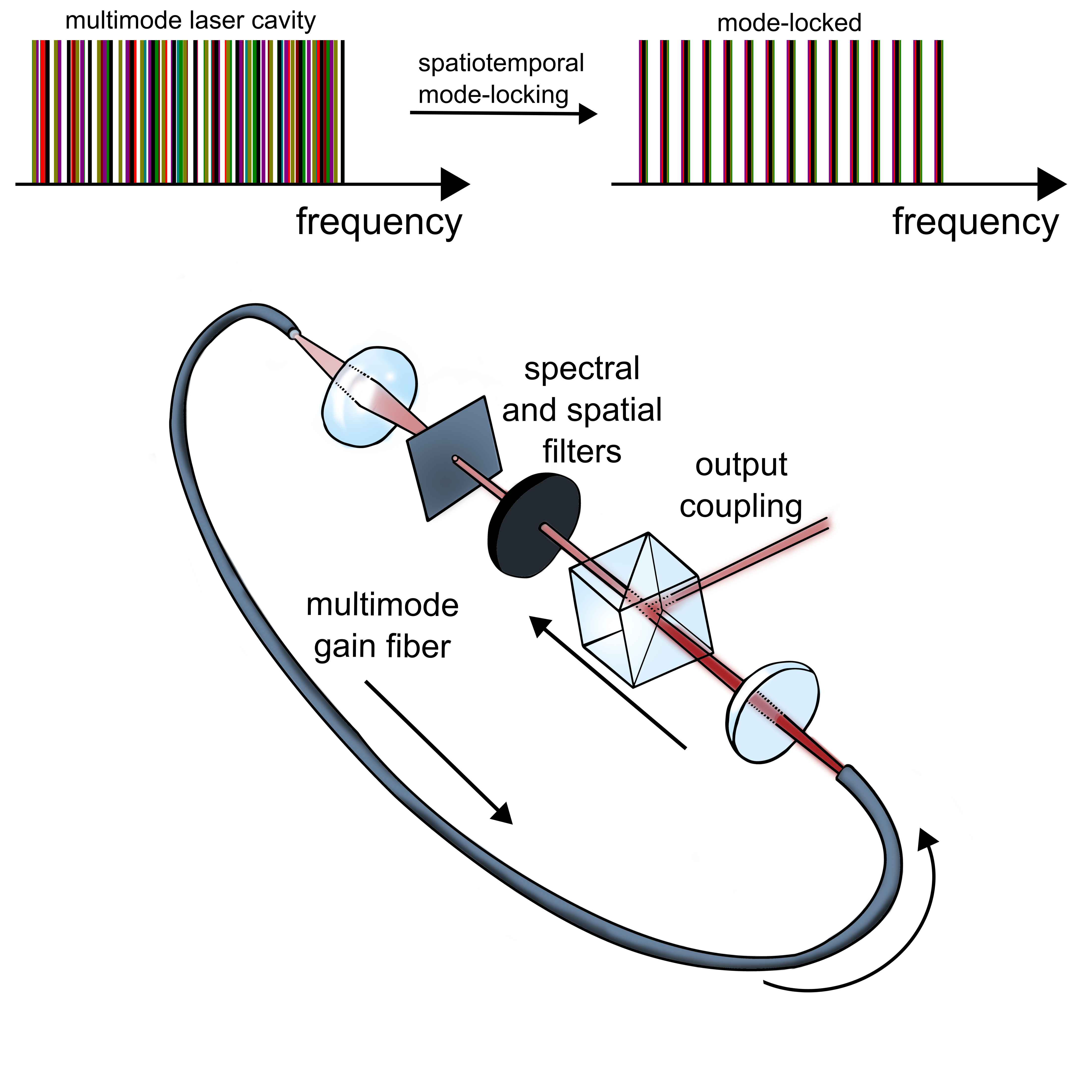Spatiotemporal Aspects of Nonlinear Wave Propagation in Multimode Fiber
The major advances of the past 25 years are dominated by phenomena that occur in single-mode fibers (SMF). However, in multimode waveguides, light encounters an environment with a dimensionality that exceeds 1D but is effectively below the 3D of free space. Wave propagation depends on the optical guiding characteristics and the excitation conditions. The complexity of the problem increases once nonlinear effects come into play: all the eigenmodes (which may number in the thousands) tend to strongly affect each other through nonlinear processes. Rich and complex dynamics are possible in nonlinear multimode environments.
In recent years, thanks partly to theoretical and computational advances, a strong focus on nonlinear propagation in MMFs has appeared. The intriguing phenomena in multimode fiber include multimode solitons, optical thermalization, various spatiotemporal modulation instabilities, spatiotemporal mode-locking, high-power continuum generation, and dispersive waves with new features.
Multimode fiber would be potentially useful in several important applications, including things like high-speed internet, neural networks, and ridiculously high-power lasers.
To simulate the complicated nonlinear pulse propagation in a fiber, either single-mode or multimode, please feel free to check https://github.com/AaHaHaa/MMTools. The code is highly-optimized for simulating passive or active fibers, single-mode or multimode, with or without polarizations. The gain model includes the simplified Gaussian model and the rate-equation model that simulates the population inversion.

Spatial-temporal mode-locked laser.